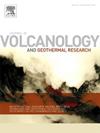The subsurface anatomy of a mid-upper crustal magmatic intrusion zone beneath the Boku volcanic complex, Main Ethiopian Rift inferred from gravity data
Abstract
Strain accommodation in the Main Ethiopian Rift has been localized since the Quaternary in axial magmatic segments that contain magma intrusion, volcanic complexes, and fault zones. However, the crustal structure and magmatic plumbing features of the individual volcanic complexes within these magmatic segments are poorly constrained. In this study, gravity data from the Global Gravity Model plus2013 was used to interpret the crustal structure and subsurface volcanic network at and near the Boku Volcanic Complex (Boku VC). Two-dimensional gravity models and an upward continuation map analysis of the upper crust reveal a gravity maximum that is interpreted as mafic intrusion at depths between 5 and 10 km beneath the Boku VC. A circular gravity maximum on the upward continued and residual gravity anomaly maps over the Boku VC and adjacent segments suggest the shallow plumbing systems beneath the segments are discrete, but that they merge into the deeper crust. The gravity models suggest that below 5 km beneath the center of magmatic segments nearly all the extension over the last 2 My can be accounted for by magmatic intrusion. Our models require faults in the uppermost crust which likely contribute to extension and may serve locally as conduits for the conveying melts or hydrothermal fluids. Our gravity analysis supports petrological studies that indicate a two-level magmatic plumbing system beneath the Wonji fault belts in which a melt supply from the upper mantle moves to mid-crust and then to shallow upper crust where the magma fractionates into more siliceous magma within smaller magma chambers.

 求助内容:
求助内容: 应助结果提醒方式:
应助结果提醒方式:


